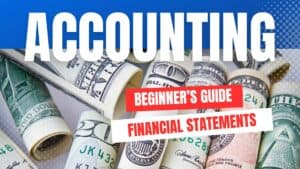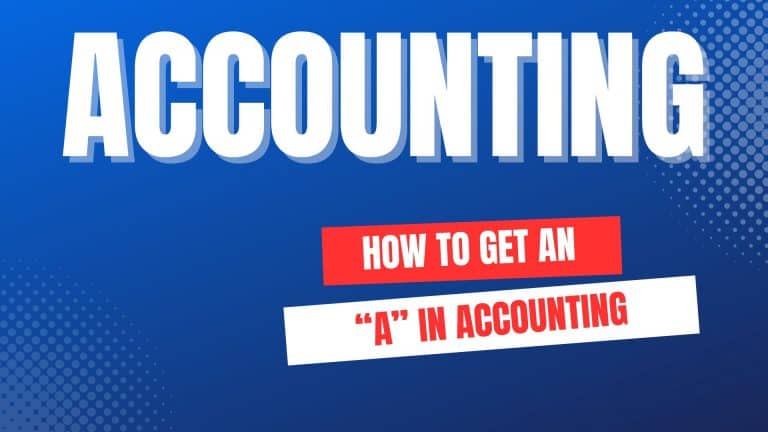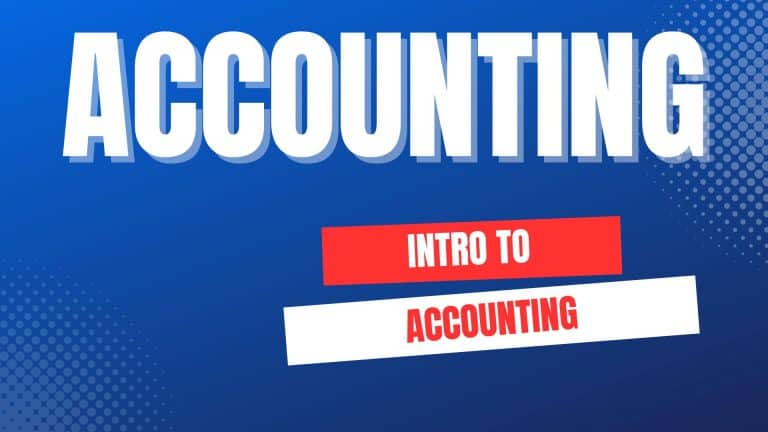Financial statements are everywhere. Sometimes, understanding them seems impossible. This beginner’s guide shows the basics of financial statements.
This is Chapter 2 in Principles of Accounting. This chapter includes:
- Recording Business Transactions
- Debits and Credits Explained: An Illustrated Guide
- What is the Accounting Equation?
- Financial Statements: A Beginner’s Guide
- Recording Business Transactions YouTube playlist
For all the chapters, see The Ultimate Guide to Learn Accounting.
Contents
Why study financial statements?
Why do you want to learn to understand financial statements? Accounting provides useful financial information for decisions.
From an entrepreneur to the largest multinational corporation, every business reports financial information. Understanding these financial reports can unlock information about the company.
Accounting is the language of business.
Maybe you want to be a better:
- Employee
- Manager
- Decision maker
- Owner
- Investor
- Board member
- Consultant
Or maybe you just want to learn more about financial statements because you want to know more about a particular business. Whatever your reason, you can learn to read a financial statement. You can do it!
Financial statements tell a story
Financial statements tell a story about a company. Every financial story is unique. However, this financial story can be good, bad, boring, or great. The story is in the financials. You just have to know where to look.
Financial statements tell a story, but you have to know how to read that story.
Business is competitive, and each business competes for customers, sales, and profits. The company’s financial statements can give you an idea of how well it is competing.
The financials show how well the company is doing and how much debt it has.
When you read financial statements, you need to always ask, “How well is the company doing?” You are learning to read financial reports to learn information about a company. So, a good question is always, “What does this mean?” and “Are these results good or bad, improving or getting worse?”
Financial statements to a company are like a person’s medical records because they show the company’s financial health.
Financial statements are to a company what medical records are to an individual. Medical records tell a lot about a person’s medical history and current health. Financial statements tell about a company’s financial history and its financial health. So, financial statements are the financial health records of a company. So, if you want to know the health of a company, you need to understand its financial statements.
Financial statements
There are four basic financial statements:
- income statement
- balance sheet
- statement of cash flows
- Statement of owner’s equity
Income statement: is the company profitable?
The income statement shows how profitable a company is for the period. The income statement shows the results of the company’s operations always for a period of time, either for a quarter or a year.
Income Statement: Revenues – Expenses = Net Profit (Net Loss)
The income statement shows how much profit a company made. So, the income statement format is revenues minus expenses. If the revenues are higher, the company would report a net profit. If the expenses are higher, the company would show a net loss. The income statement is sometimes called the profit & loss statement. Net profit is also called net income or net earnings.
Balance sheet: What does the company own and owe?
The balance sheet shows what the company owns, what it owes, and its net worth. The company owns assets. Assets are all the valuable stuff that the company controls.
Subtract the company’s debts that it owes from the assets that it owns and you will figure out the company’s net worth. The net worth is what is left over after all the debts have been paid.
Balance Sheet: Assets = Liabilities + Equity
The balance sheet shows the accounting equation. The accounting equation is Assets = Liabilities + Equity.
Cash flow statement: cash inflow and cash outflow
The cash flow statement shows the company’s cash in and out of the business. It is useful for seeing how much cash is received by the company through operations and how much through stock and bond sales. It is also useful to see how much cash is spent on large asset purchases and the amount of stock and bond repurchases.
You can learn to read financial statements. Warren Buffett, the legendary investor, recommends accounting for everyone that invests in stocks. It is also important for people that want to know more about a company or to make better decisions.
You have to understand accounting and you have to understand the nuances of accounting. It’s the language of business and it’s an imperfect language, but unless you are willing to put in the effort to learn accounting— how to read and interpret financial statements—you really shouldn’t select stocks yourself. — Warren Buffett
Accounting Chapters
Here are the accounting chapters in The Ultimate Guide to Learn Accounting:
- Introduction to Accounting
- Recording Business Transactions
- Adjusting Entries and the Accounting Cycle
- Accounting for Merchandising Activities
- Inventory and Cost of Goods Sold
- Cash and Internal Control
- Accounting for Receivables
- Accounting for Long-Term Assets
- Accounting for Current Liabilities
- Accounting for Long-Term Liabilities
- Corporations
- Statement of Cash Flows
- Financial Statement Analysis
- Managerial Accounting
- Job Order Costing
- Process Costing
- Activity Based Costing
- Cost Volume Profit Analysis
- Variable Costing
- Master Budgets
- Standard Costing
- Performance Measurement
- Relevant Costing
- Capital Budgeting
- Time Value of Money
See also Accounting Sample Exams.




